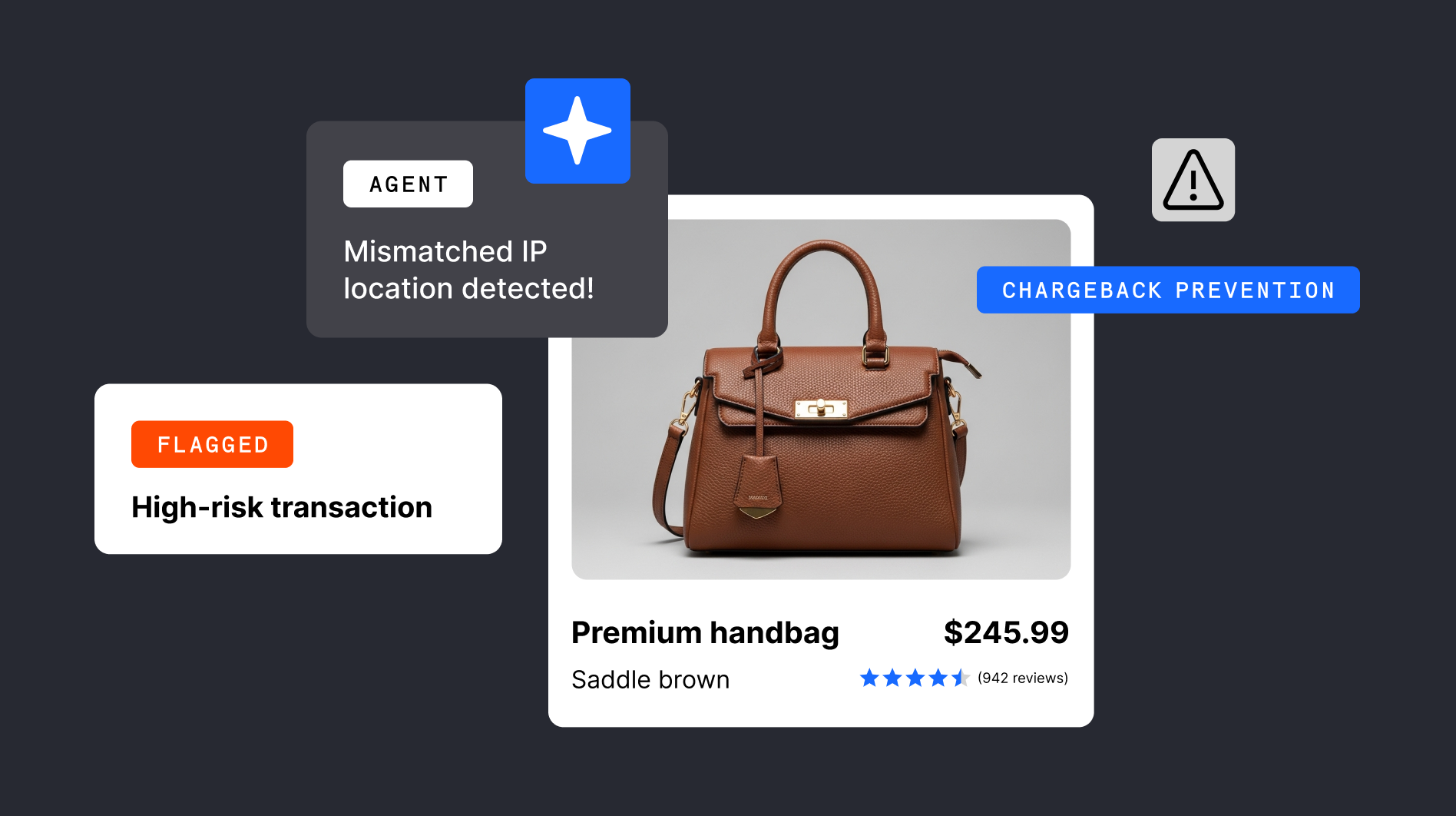‘Friendly fraud’ is a contradiction in terms – there’s nothing nice about this form of first-party misuse. One in four (25%) consumers have deliberately tried to claim a refund after receiving the item they wanted on two or more occasions, a 2025 survey for Checkout.com found.
Friendly fraud occurs when a customer disputes a legitimate transaction in order to claim back the funds. It’s a big problem for merchants because the payment was authorized, yet the customer claims it was actually the result of fraud. It can take costly administration to resolve each incident, and is hard to stamp out completely.
A customer claiming their payment was fraudulent triggers a payment dispute, which leads to a costly chargeback if you don’t resolve the dispute in time. That means an extra fee from the card network, and the possibility of penalties if your volume of chargebacks is too high.
How does friendly fraud occur?
Friendly fraud always involves the customer making a wrongful claim that a payment should not have gone through. The first step is the customer raises a dispute with their card issuer (usually a bank). That means the merchant doesn’t have a chance to resolve the customer’s problem, but instead receives a payment dispute notification (possibly through webhook, or an alert system such as Ethoca or Verifi).
The cardholder is either knowingly or unknowingly in the wrong. Either way, the payment dispute is raised and must be addressed.
Here are some of the most common scenarios:
- Refund policy confusion: A customer wants to return an item but doesn’t understand the brand’s returns process. Instead of going through the merchant for a refund, they contact their issuer and raise a payment dispute.
- Poor customer service: A customer is unhappy with their purchase but is not getting a satisfactory response (or gets no response) from the merchant. They might interpret the merchant’s conduct as a scam, and feel worried enough that they go to their issuer. For example, the customer hasn’t received their order due to delays.
- Buyer’s remorse: A customer regrets an online purchase, but missed the return window. Unable to request a refund from the merchant, they may claim to their issuer that the merchant has done something wrong or they were a victim of fraud.
- Unrecognized charge: A customer makes a legitimate purchase but forgot about it and does not recognize the billing descriptor on their card statement. Suspecting the charge is fraudulent, they inform their issuer.
- Family member made the payment: This often happens when a child or partner makes a purchase while using the cardholder’s device. Unaware this has happened, the customer disputes the payment. It’s known as “family fraud”.
Around half of merchants (46%) in ecommerce payment and fraud management believe the most common reason for first-party misuse is consumers learning to “game the system”, according to the Merchant Risk Council (MRC).
In fact, most consumers who have deliberately tried to claim a refund after receiving their desired item once go on to do so multiple times, according to research carried out for Checkout.com in 2025. While 63% of online shoppers in the UK and US have never attempted to do so, one in four (25%) have requested their funds back on at least two occasions – despite the merchant fulfilling their legitimate order.
Researchers believe rising friendly fraud rates are partly due to the rising cost of living and inflation in many global markets. Additionally, organized criminal networks run refund scams, even offering fraud-as-a-service in which consumers hire professional fraudsters to reclaim funds on their behalf.
Learn more: 10 fraud rules you need at minimum
Consequences of friendly fraud for merchants
Unfortunately, the merchant loses money in many instances of friendly fraud. This is particularly true for merchants shipping physical products. Most of the time, managing a friendly fraud claim is about minimizing losses. Some of the costs include:
- Lost stock: If the issuer finds the cardholder to be a victim of fraud, they won’t need to return the product to the merchant.
- Payment processing fees: Merchants must usually pay per payment dispute raised, and additional fees occur with each chargeback. If too many chargebacks are raised for a merchant, then network charges will increase for all transaction processing due to the increased risk.
- Wasted overheads: The cost of picking, packing and shipping the product result in a loss. Not to mention the cost of customer acquisition, which may have taken the form of paid marketing.
- Staff resources: It takes specialist staff time and effort to formally challenge a payment dispute and provide evidence. Although some automation is possible, there’s usually a manual portion of work needed.
Payment disputes can become a serious problem for a business. If parties handling your payments see too many disputes over your transactions, you could face additional costs and penalties. For instance, new rules from Visa mean that all payment disputes raised will count towards the VAMP ratio. If merchants fall into the “excessive” threshold, then they’ll face extra costs.
Learn more: Visa Acquirer Monitoring Program (VAMP) explained
How big is the friendly fraud problem?
Rates of first-party fraud – where the guilty party uses their own personal details – are rising rapidly in recent years. Among LexisNexis clients, reports of first-party fraud made up 35.9% of all fraud reports in 2025, compared with 14.6% the year prior.
First-party misuse (i.e. friendly/chargeback fraud) is the fourth most common type of fraud experienced by online merchants, according to the Merchant Risk Council. It affects two in five merchants (39%), making it a more frequent problem than card testing, identity theft, and account takeover fraud.
Friendly fraud was the second most costly type of fraud for ecommerce merchants in the United States in 2025, per LexisNexis. These merchants’ top priorities for fraud prevention and customer experience are to minimize fraud losses (17%) and improve customer trust and loyalty through seamless experiences (28%). This shows just how important the balance is between crafting a smooth checkout while leaving little room for costly fraud.
When fraud controls are too rigid, customers may abandon their purchases or even stop using an account altogether. Negative user experience is the leading reason for abandonment during new account setup (36% of retail and 37% of ecommerce firms) in the US, highlighting how protective measures can inadvertently drive drop-off.
Read more: What is friendly fraud vs chargeback fraud?
How to prevent friendly fraud
There are a simple few ways that you can reduce the likelihood of friendly fraud occurring.
Here are my top tips:
- Clearly communicate your returns policy
- Keep the customer updated on delivery/shipping progress
- Ensure customer service is easy to contact
- Make your billing descriptors clear
- Allow customers to cancel their own orders or subscriptions (where possible)
Use a strong authentication measures. Protocols like 3D Secure can be used to fight fraud through advanced verification procedures. If you later wish to fight a payment dispute, then you’ll need to prove the cardholder really did make the purchase. A positive authentication data point is invaluable here.
Create an easy return process for your customer. You should make it as easy as possible for your customers to return products that they are unhappy with or that don’t suit their requirements. For example, including a return form with instructions in the packaging when you ship an item. You should also be communicative with any customer who does want a refund, and clearly spell out your returns policy
Pre-disputes resolution tools prevent certain payments becoming a chargeback. You can then resolve it before it counts toward your dispute ratio. While this means you lose the value of the initial payment, it won’t add as great an operational burden as fighting a payment dispute would.
Reduce friendly fraud with Checkout.com
Dealing with customer disputes, chargebacks and instances of friendly fraud are a reality of accepting payments. But there are plenty of tactics and tools at your disposal to minimize friendly fraud and all the costs and complexities involved.
Our disputes API provides recommended solutions and advice on responding to each dispute, helping you with case-by-case decision-making, resolving disputes faster and reducing the administrative costs involved.
To find out more, contact our team of payment experts, or read more about our Fraud Detection Pro to avoid fraud and unnecessary chargebacks.















.png)
